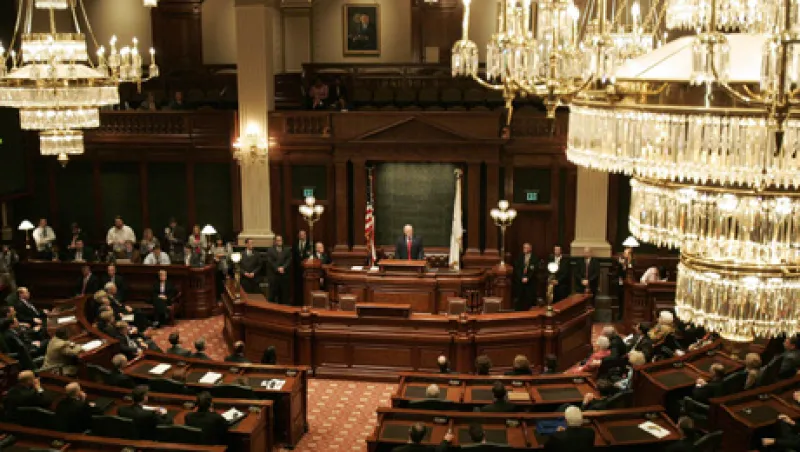Usually, when state pension plans are underfunded, the taxpayers also bear a high per capita liability, and when they’re well-funded, the per capita liability is low. But not always, says Chicago research firm Morningstar, in a report released on November 26.
The report looks at two metrics. One is the usual measure — the funded ratio, which is derived very simply by dividing the plan’s assets by its liabilities. But Morningstar also looked at the unfunded actuarial accrued liability, or UAAL, per capita, and found “multiple notable exceptions in which the two data points do not correlate when rank-ordering the systems,” the report said.
UAAL per capita “is not widely looked at in the industry, and we think it should be,” says Morningstar municipal credit analyst Rachel Barkley. “It’s something we feel very strongly about,” she says. If the plan is well-funded by the first measure, but UAAL per capita is “in the poor category, we would consider it a potential credit negative, because it could cause problems,” she adds.
The report found that 21 states fell below what Morningstar calls a “fiscally sound threshold of a 70 percent funded ratio.” Illinois was at the bottom, with a 43.4 percent funded ratio and a $6,505 per capita UAAL. No surprise there. And it’s also not a surprise that of the seven states with an aggregate funded ratio of at least 90 percent, Wisconsin has the strongest system, with a 99.8 percent funded ratio and a UAAL of $23 per capita.
But then things get more interesting. While Illinois has the lowest funded ratio, “Alaska has by far the highest UAAL per capita, at over $10,000,” despite “its higher, though still poor, unfunded ratio of 59.2 percent.” Indiana’s unfunded ratio isn’t much better than Alaska’s at 59.6 percent, but its UAAL is substantially lower, at $2,284 per capita — “even lower than that of more well-funded plans,” the report said.
Part of the discrepancy — and the reason it can be hard to do apples-to-apples comparisons – is that the state pensions rely on different sources of funding. For instance, a big chunk of Alaska’s funding comes from oil and gas revenues, Barkley says. That makes it unlikely that its citizens are going to be hit up for $10,000 apiece. But with states like Illinois, which have to rely on more volatile sources of funding, like sales and income taxes, the high UAAL per capita is definitely a concern, she says.
The report notes that teachers’ pensions are usually the largest part of a state’s liability, but some states don’t contribute to them. For instance, Colorado’s UAAL per capita is a “moderate” $1,804, despite its low 57.7 percent funded ratio, because the state doesn’t contribute to the pension plan for public school teachers. But “that does not mean that Colorado taxpayers aren’t ultimately liable for the funding,” the report says.
The report also notes that “even within well-funded systems, individual plans can often be severely underfunded.” It cites the Minnesota system, which it says is “adequately funded, with a 79.3 percent funded ratio.” But Michigan’s Legislators Retirement Fund has “an exceptionally low 8.8 percent funded ratio,” and its Elective State Officers Fund “has a 0 percent funded ratio,” it said.
“While these plans are relatively small compared to the system in its entirety, they still need to be considered. Low funded levels in these smaller plans can lead to budgetary pressure,” the report said.






